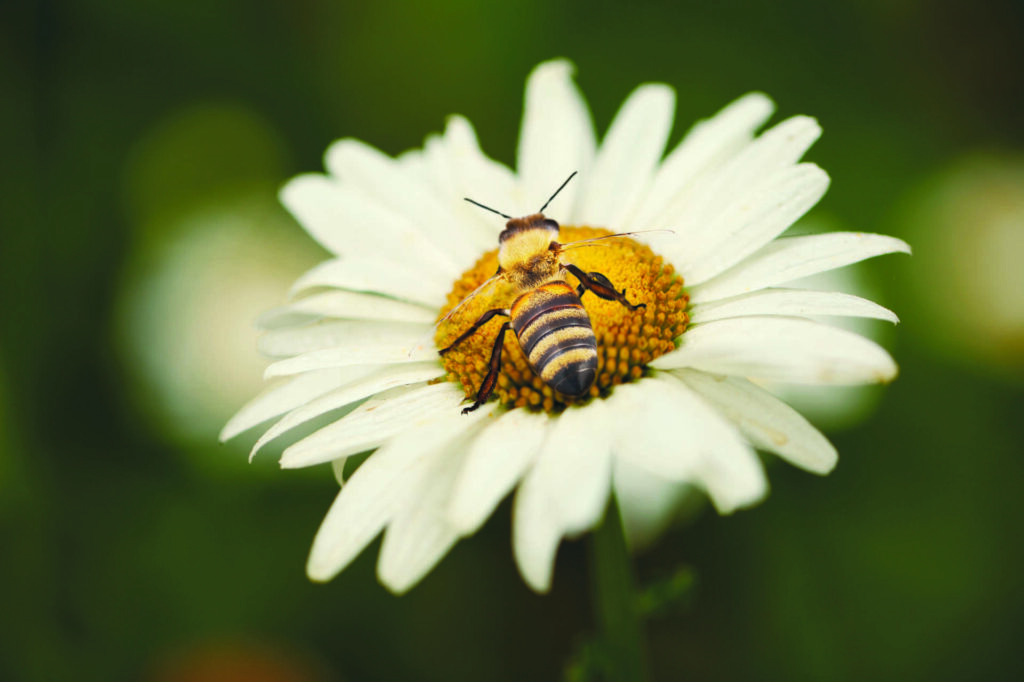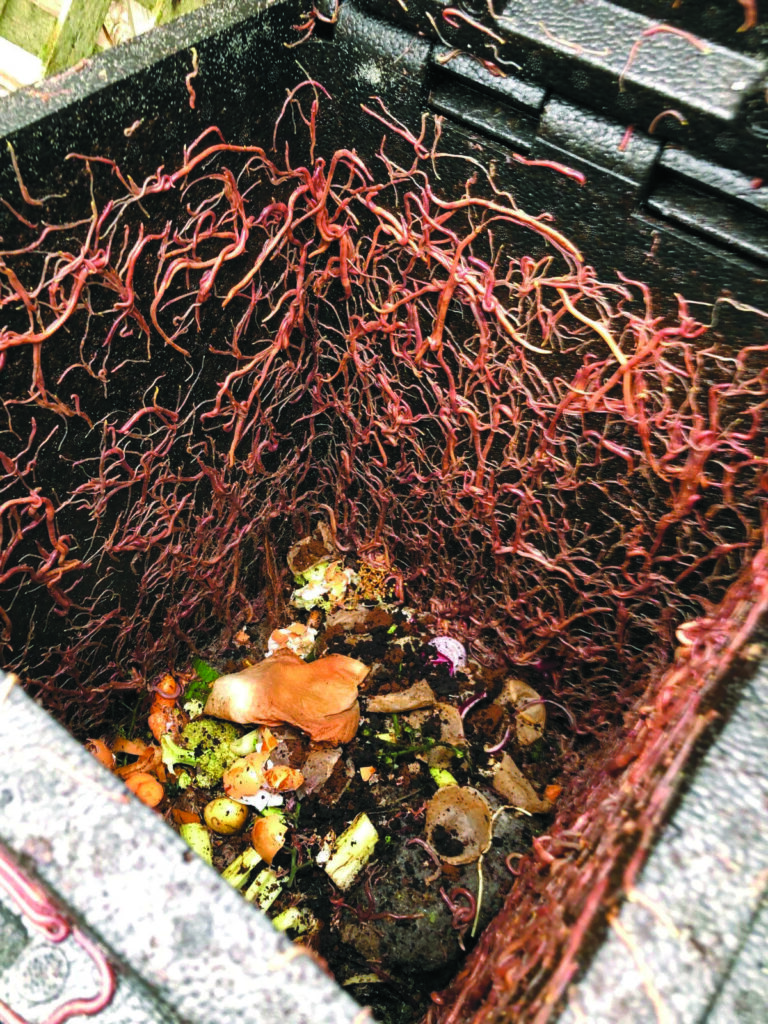
by Miki Marks
Daisies have been coming in to flower, heralding the start of the warmer weather and the increase in daylight. Their name comes from ‘Day’s Eye’ because the flower opens with the sun, when the pollinators are around, and closes in the evening. They are often closed in dull weather too, as there are less pollinators about.

The daisies – Latin name bellis perennis – belong to the Asteraceae plant family and are thought to have first developed in Argentina 50 million years ago. Aster comes from a Greek word meaning star. The poet Shelley likened them to earthbound stars. It is a large family and includes dandelions, thistles, sunflowers, zinnias, dahlias and, rather surprisingly, lettuces.
The common English daisy is small and has a central yellow disc made up of individual flowers with a five lobed petal tube–and each white petal is also a flower. When researching plants in an old herbal book it is almost impossible to find a plant which had no medicinal use at all. Daisies were also known as ‘bruiseworts’. You mixed chopped flowers with butter and applied it to wounds. A little more far-fetched was the belief that if you fed daisies to puppies it would stop them growing into large dogs. The famous herbalist Nicholas Culpepper believed that the reason nature made the daisy common was because it was so useful, ‘Boiled in asses milk’, he wrote ‘it is very effectual in consumption of the lungs’.

The ‘bellis’ part of the name means beautiful and certainly they are pretty if looked at closely. Chaucer said it was his favourite flower. He would rise early in April and wander the meadows looking for the only plant ‘which could soften all my sorrows’.
Despite the daisies’ many attributes, they are much disliked by lawn purists. As are earthworms for leaving unsightly casts all over the pristine green sward. There are still some nasty sounding chemicals obtainable on-line to ‘discourage’ worms.
It is interesting that Charles Darwin – for all his travels and fame – made a life’s work of studying earthworms. He started as a young man and continued his experiments for over forty years. Just before he died in 1881 he published his last book The Formation of Vegetable Mould through the Action of Worms. Hardly a catchy title for the book; but proved to be most influential – or, forgive the pun: groundbreaking. Until then, the majority of people thought the earthworms, were just useless pests. Darwin wrote that worms literally move the earth – and he had soil sent from the Roman remains in Abinger and even Stonehenge, so that he could study how much soil the worms brought to the surface. In the process, they aerate the soil and help its fertility with their gut excretions.

Earth worms are most active in the morning which is why the ‘early bird’ is out then to catch them. They have mucus and little hairs covering their bodies which makes it easier to move through different types of soil. They breathe through their skin and that is why their are more easily found near the surface after a rainstorm. I have certainly noticed more worm casts in my garden after a very wet winter – even appearing as early as January when the worms are usually inactive. I am guessing their burrows were waterlogged and they were coming up for air. Worms are both male and female but still mate. They also have remarkable powers of regeneration and can re-grow sections of their bodies, which has encouraged many nasty experiments.
Having done some research into worms for this article, I realise why Darwin needed 40 years. There are so many sorts. Coincidentally as I was writing this, a friend sent me a photo of worms in her compost bin. These are brandlings – Eisenia foetida so named because they eject a yellow fluid with a foetid smell when irritated. Also known as red wigglers. What does it take to irritate a worm?
Our weather is undoubtedly changing; every single month last year the temperature recorded was above average -and less predictable – oscillating between periods of heavy rain and long droughts. We are losing the subtleties of our seasons. On fine days it has been noticed that our cloudscapes are changing. Clouds are made of water droplets and ice crystals condensing in the cooler air high up in the sky. As carbon dioxide levels rise, less water is released into the atmosphere and fewer cumulus clouds will form – and we might lose those lovely ‘cotton wool’ clouds that move across the blue canvas of the sky on sunny days.
Every month offers its own unique sights, sounds and smells. April seems to me the month which especially reminds me of the driving power of nature to flourish – and revives my hopes.











